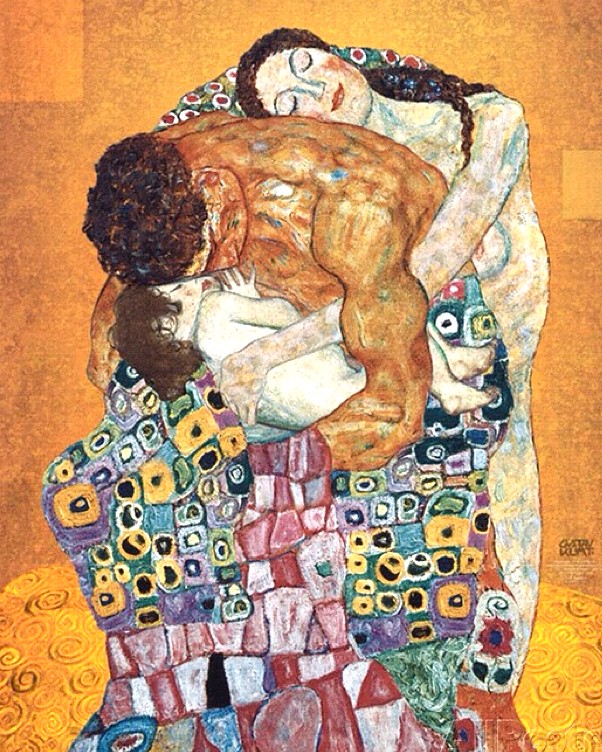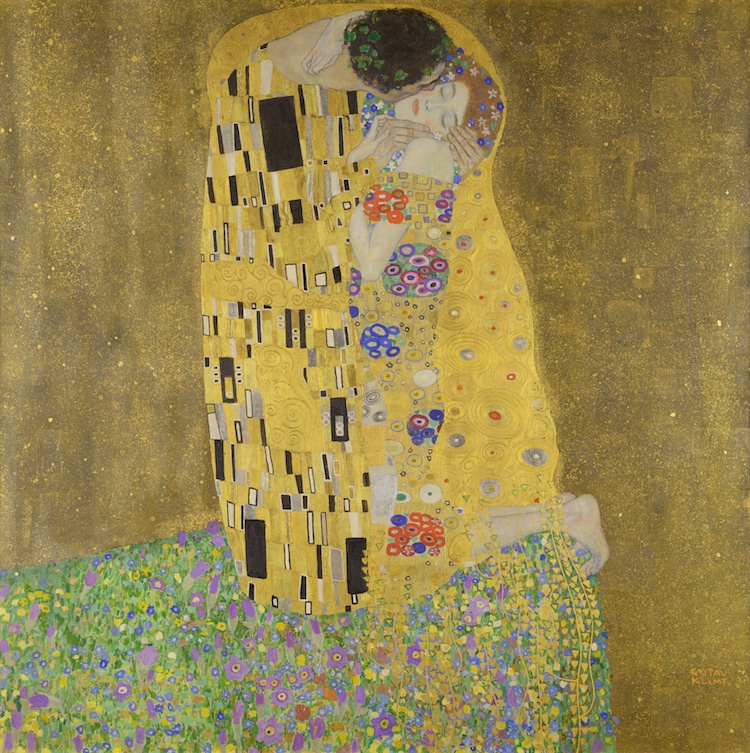
Gustav Klimt, “The Kiss,” oil and gold leaf on canvas, 1907–1908 (Photo: Belvedere via Wikimedia Commons, Public domain)
Austrian artist Gustav Klimt is known for his ethereal, pattern-rich portraits. Today, several of these canvases are considered masterpieces, though The Kiss, a particularly exquisite piece, seems to float above the rest.
Featuring shimmering gold tones, stylized forms, and sentimental iconography, The Kiss has enchanted audiences since its completion in 1908. Today, the awe-inspiring piece is housed in Vienna’s esteemed Österreichische Galerie Belvedere, though its illustrious legacy transcends Klimt’s Austrian roots.
|
Title
|
The Kiss
|
|
Artist
|
Gustav Klimt
|
|
Year
|
1907-1908
|
|
Medium
|
Oil and gold leaf on canvas
|
|
Size
|
71 in × 71 in (180 cm × 180 cm)
|
|
Location
|
Galerie Belvedere (Vienna, Austria)
|

Photograph of Gustav Klimt, 1914 (Photo: Josef Anton Trčka via Wikimedia Commons, Public domain)
Art Historical Context
As a member of the Secessionist Movement and a pioneer of Symbolism—a European genre of art characterized by mystical motifs, a personal approach to the visual arts, and an aesthetic similar to the contemporaneous Art Nouveau and Arts and Crafts movements—Gustav Klimt often took an avant-garde approach to painting. His distinctive style is particularly apparent in The Kiss, which was painted during his luminous “Golden Period.”
Works produced during this time feature pronounced planes and delicate detailing made of gold leaf. Inspired by Byzantine mosaics, this gilding gives each piece a glimmering appearance that accentuates the ethereal nature of Klimt’s subject matter and style. In addition to The Kiss, Portrait of Adele Bloch-Bauer I (1907), Judith and the Head of Holofernes (1901), and Water Serpents I (1904) convey this glimmering aesthetic.
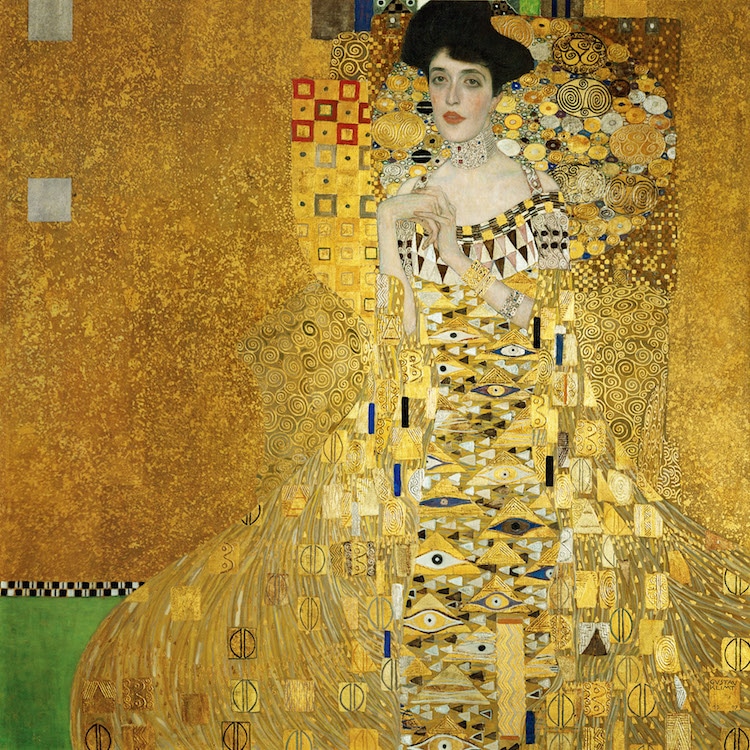
Gustav Klimt, “Portrait of Adele Block-Bauer I,” 1907 (Photo: Neue Galerie New York via Wikimedia Commons, Public domain)

Gustav Klimt, “Judith and the Head of Holofernes,” 1901 (Photo: Belvedere via Wikimedia Commons, Public domain)

Gustav Klimt, “Water Serpants I,” 1904–1907 (Photo: Belvedere via Wikimedia Commons, Public domain)
Subject Matter
The Kiss depicts an embracing couple kneeling in a grassy patch of wildflowers. Clad in a geometrically-printed robe and with a crown of vines on his head, the man cradles the woman’s face as he leans in to kiss her. The female figure—whose colorful, organically patterned dress contrasts her partner’s garment—wears flowers in her hair. As she wraps her arms around her partner’s neck, her eyes are peacefully closed, emphasizing the tranquility and intimacy of the scene.

Gustav Klimt, “The Kiss,” oil and gold leaf on canvas, 1907–1908 (Photo: Belvedere via Wikimedia Commons, Public domain)
Klimt often explored this theme of love in his work. In The Tree of Life, a mosaic from his Stoclet Frieze series, two figures that bear striking resemblance to those featured in The Kiss—both compositionally and aesthetically—are shown in a similar intimate embrace.
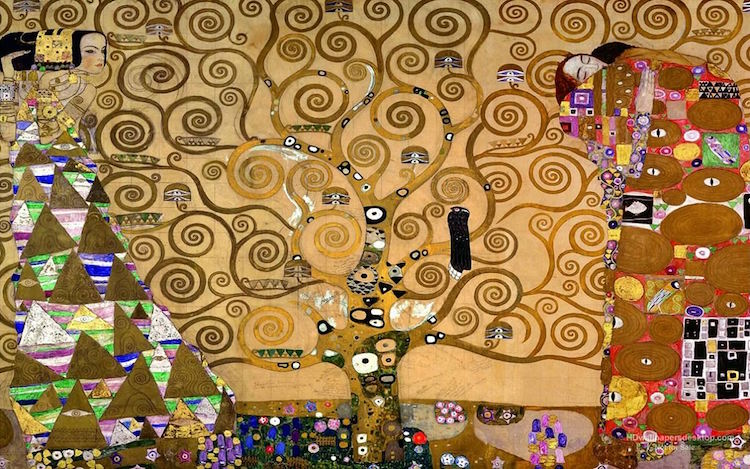
Gustav Klimt, “Tree of Life,” 1905–1909 (Photo: MAK – Museum of Applied Arts via Wikimedia Commons, Public domain)
This amorous focus is also evident in Love, an early piece painted in 1895. While, stylistically, this work has little in common with Klimt’s more well-known paintings, its romantic subject matter conveys his interest in exploring and capturing love.”Whoever wants to know something about me,” he said, “should look attentively at my pictures and there seek to recognize what I am and what I want.”

Gustav Klimt, “Love,” 1895 (Photo: Vienna Museum via Wikimedia Commons, Public domain)
As apparent in The Family, another gilded painting by Klimt, the artist’s tendency toward this iconography is not limited to romantic love. In this depiction, a sleeping mother and father hug their child. Like The Kiss, the scene offers a quiet glimpse into an intimate relationship.
Aesthetic Importance
In addition to its golden style and subject matter, The Kiss is celebrated for other details distinctive to the artist. These include the presence of contrasting patterns, a bright color scheme, and fine lines.
Intricate Patterns
Like many painters of the Vienna Secession—a movement formed by Austrian artists interested in breaking free from tradition—Klimt employed a highly decorative style in most of his works. This approach materialized mostly as patterns, which have a strong presence in The Kiss. From radiating rings and swirling spirals to rectangular blocks and concentric squares, the shapes, and forms featured in the painting showcase Klimt’s attention to detail.
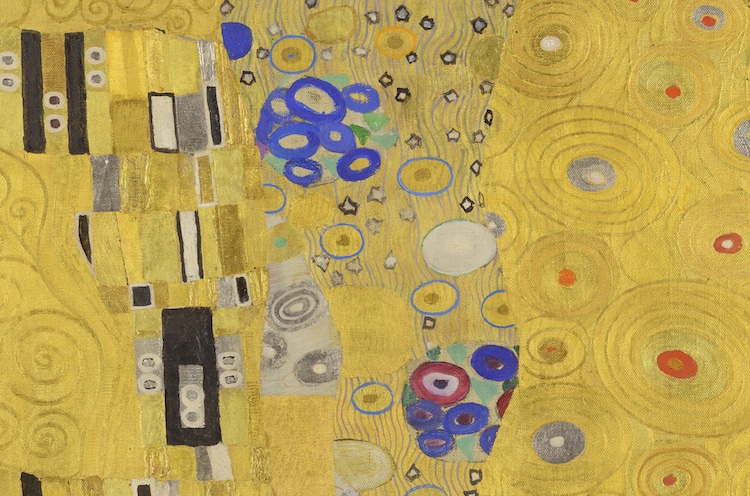
Detail of “The Kiss”
Vivid Colors
Though he is predominantly renowned for his liberal use of gold, Klimt also often employed a radiant range of colors in his compositions. This is particularly apparent in the stylized flowers that adorn the scene. These floral embellishments are evident in the hair of the embracing subjects, as well as in the grass in which they’re kneeling. They are made up of an array of tones, including purple, white, blue, green, red, and orange, and add a touch of matte color to the nearly entirely reflective canvas.
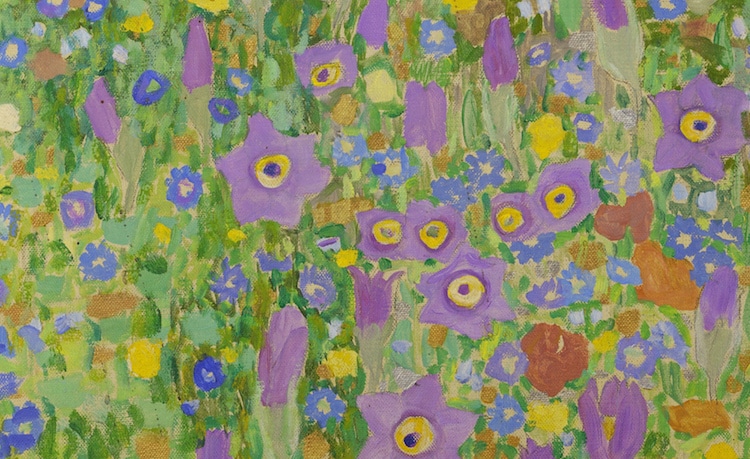
Detail of “The Kiss”
Delicate Draughtsmanship
While many people recognize The Kiss for its bold pattern-work and shimmering paint, the fine lines that compose its figures are also characteristically Klimt. The artist’s skilled draughtsmanship is especially evident in his rendering of the female subject. Her soft face features intricate eyelashes and a delicately-defined nose, while simple lines compose her gently bent hands.
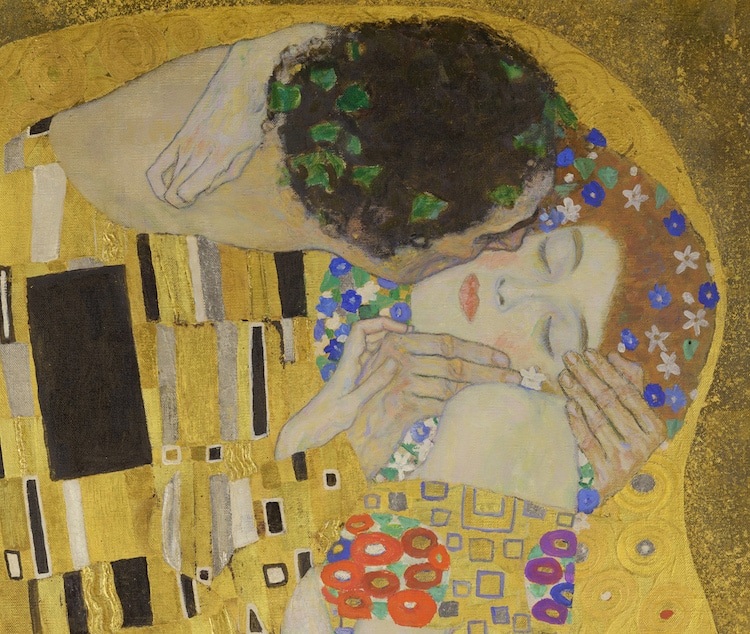
Detail of “The Kiss”
Even with such a striking ability to gracefully conceive figurative yet dreamy subject matter, Klimt was unsure of his talents’ true merit. “I can paint and draw,” he explained. “I believe this myself and a few other people say that they believe this too. But I’m not certain of whether it’s true.” Given the everlasting influence and enduring admiration of The Kiss, however, there’s little room for doubt.
Frequently Asked Questions
Who painted The Kiss?
Austrian artist Gustav Klimt painted The Kiss between 1907 and 1908.
Where is The Kiss painting?
Gustav Klimt’s The Kiss is located on the upper level of the Belvedere Museum in Vienna, Austria.
What is the meaning behind The Kiss by Gustav Klimt?
The Kiss is a depiction of love, as evidenced by the couple intertwined in an amorous embrace.
This article has been edited and updated.
Related Articles:
20+ Brilliant Quotes About Art From Famous Artists and Great Creative Minds
Art Nouveau, the Ornate Architectural Style that Defined the Early 20th Century
Art History: How Van Gogh’s ‘The Starry Night’ Came to Be and Continues to Inspire Artists
Klimt-Inspired Golden Map of Manhattan Celebrates the Bright Lights of New York at Night

